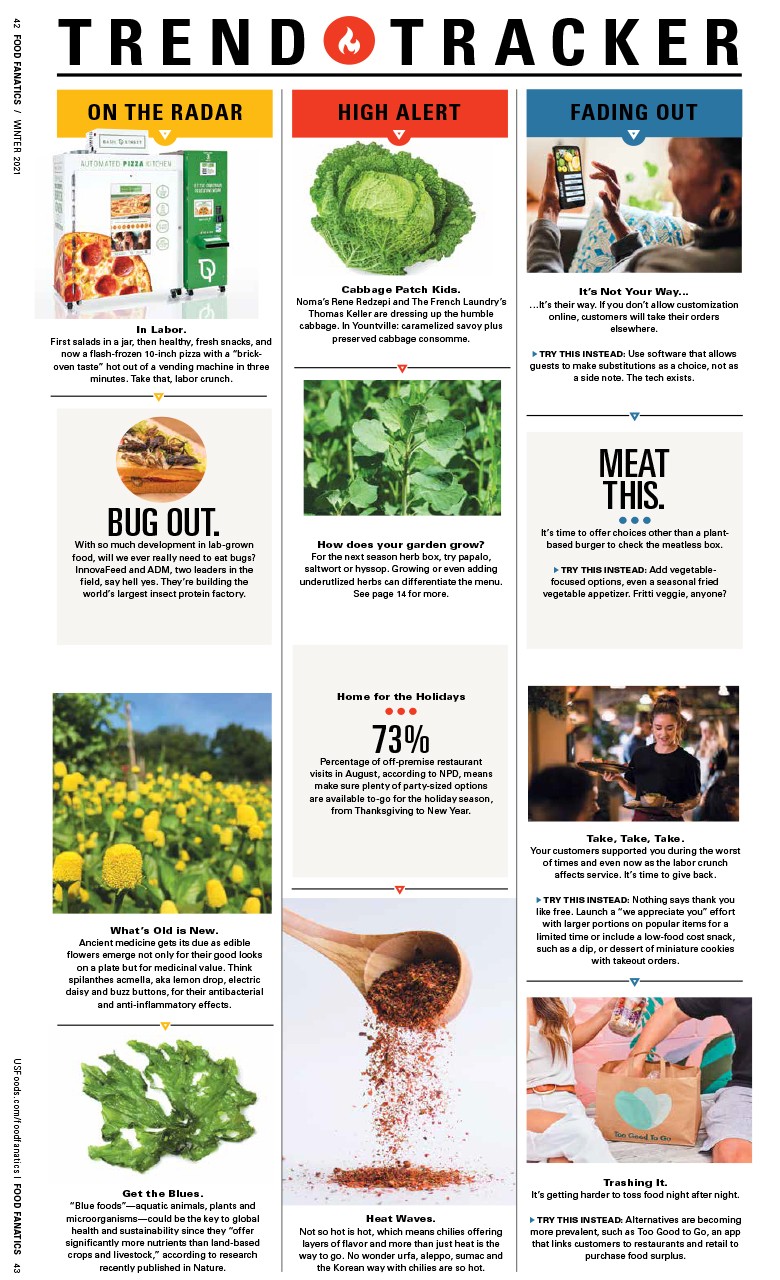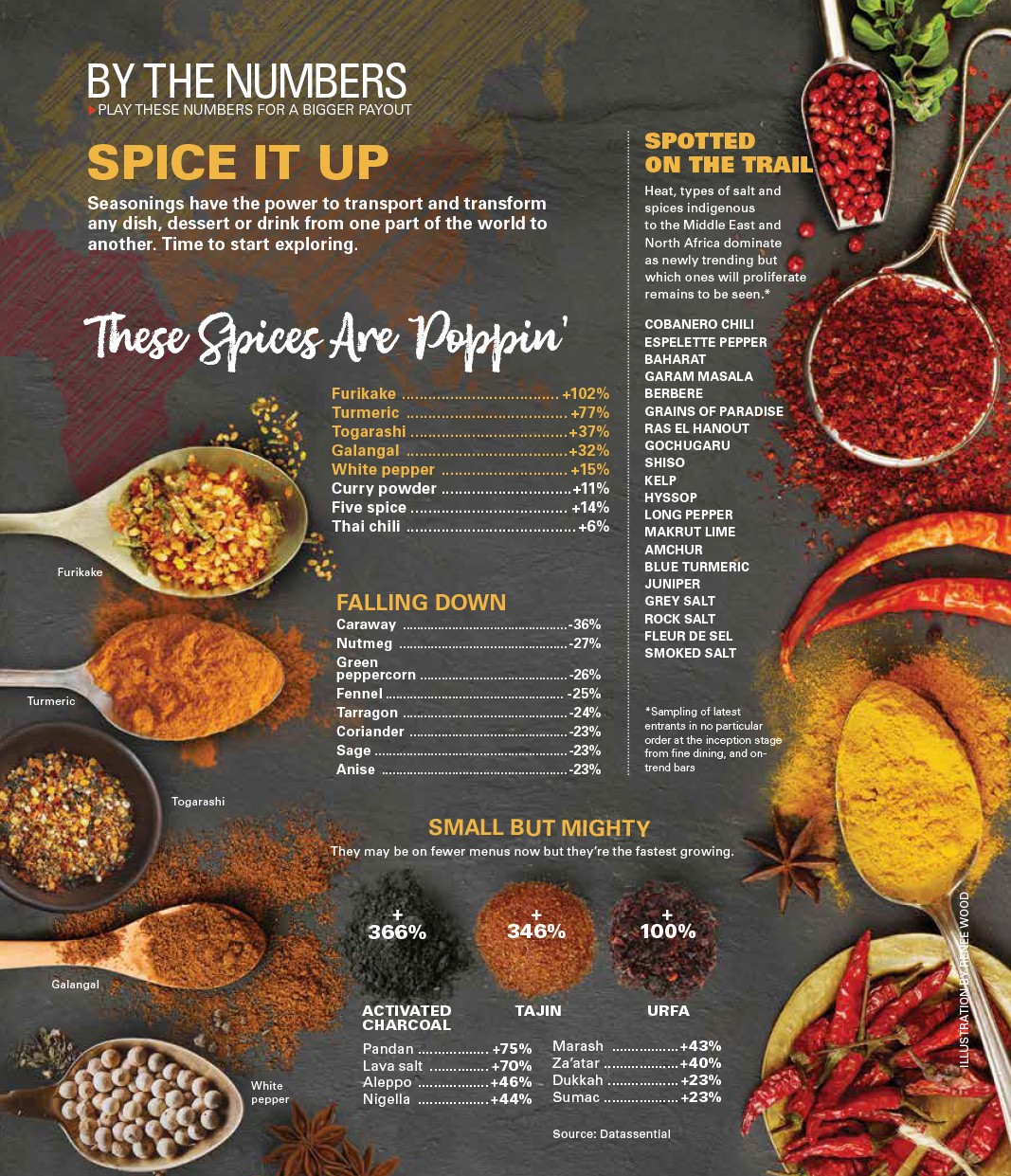STEAK YOUR CLAIM: STEAKHOUSE TRENDS
It’s prime time for a new generation of steakhouses
Steakhouses, which have come to symbolize the quintessential American meal, are undergoing a transformation—one that heeds the shifting preferences and discerning tastes of today’s diner.
Beef is responsibly raised, often grass-fed or prime. Less desirable cuts of meat have joined the ranks of their high-end counterparts. Side dishes resemble first courses more than steak’s tagalong friend, now that they’re more inventive and driven by the season.
“It’s taking what everyone loves and looking at it through a new lens,” says Danny Grant, executive chef at Maple & Ash, one of seven modern steakhouses that have opened in Chicago over the last 18 months.
Stalwarts, from Peter Luger (circa 1887) in New York to Bern’s (circa 1956) in Tampa, Florida, have proven they can endure fickle and harsh economic times. Longevity and the traits that identify them as classic steakhouses—moody, dimly lit dining rooms; leather banquets; and simple just-steak-on-a-plate with all a la carte options—have worked in their favor.
But trend-forward enterprising restaurateurs recognize that today’s diners seek the stylish, adventurous and bold. “A steakhouse has to be more than a steakhouse to stand out,” Grant says. “We’re a steakhouse, but we’re not a steakhouse.”
Such thinking may seem counterintuitive, considering the name, but it makes sense that next-generation steakhouses like Maple & Ash aren’t driven entirely by steak. Their point of deviation comes together as their persona.
For example, the menu is structured like a steakhouse, with sections dedicated to meat, sides, appetizers and non-beef dishes. But look “under the hood,” says Grant, who earned two Michelin stars at his previous gig, and it resembles a chef-driven restaurant. The classic seafood tower is roasted, not steamed; sauces feature classics like béarnaise, but also include caramelized shallots and roasted bone marrow listed under “Arm Candy.”
“We’re not scared to take risks,” says Grant, citing his “I Don’t Give a F*@K!” menu option. For $145 per person, the menu description says, “Let us take care of you.”
“We just keep sending out food until you say stop,” Grant says.
More often than not, modern steakhouses offer luxe add-ons, such as foie gras, lobster and king crab, as well as a high-end surf and turf. Swift & Sons, also in Chicago, offers an 8-ounce fat cap with 1½-pound lobster for $72.
Cuts of steak and the type of meat are differentiators that go beyond the norm. Swift & Sons offers wagyu from America, Australia and Japan, as well as prime cuts, such as an 8-ounce filet and a 34-ounce aged porterhouse. Prices start at $45 and cap at $100.
It’s not unusual for a chef to partner with a rancher or even own the farm, like Renee Erickson of Bateau in Seattle.
The menu is only part of the equation for the updated steakhouse. Design-forward spaces and service are also shaping the transformation. “We wanted the opposite of the white linen, stuffy atmosphere that typifies your traditional steakhouse,” says Executive Chef Tim Kolanko of Stake Chophouse & Bar in Coronado, California. “We created the polar opposite: black onyx, marble, sleek and contemporary.”
For service, tableside presentation is stepping up, fascinating millennials who have never experienced it while dialing up the nostalgia factor for baby boomers. At the Salt Cellar in St. Paul, Minnesota, a 20-ounce sirloin culotte is sliced and plated tableside with two self-selected sides and sauce Choron for $65.
“Tableside is just a fun way to engage your diners,” says Alan Bergo, the restaurant’s executive chef. “It’s also a way to talk about the ingredients we use and why we use them. It’s the customer’s direct tie to the kitchen.”
House by HouseA beloved classic keeps tradition, Name and location: Bateau, Seattle Name and location: Delmonico’s, New York City Name and location: Quality Eats, New York City
|
THE PRICE IS RIGHT
The modern steakhouse is emerging during improved economic conditions.
The worst U.S. drought in half a century—which took hold in 2012 and set record-high beef prices—is over. Ranchers have been building their stocks.
Earlier this year, the price of grain fell, prompting feedlot owners to keep cattle longer, so the animals could increase in weight and bring in higher prices. Grain prices increased midyear, but projections for more cattle remain unchanged for 2017.
Prices for beef have been falling, which means Americans are projected to eat 54.3 pounds per person by the end of the year, about a half-pound more than 2015.
Chefs have been offering underutilized and less expensive cuts for the last several years. This will continue to help fuel consumption.



